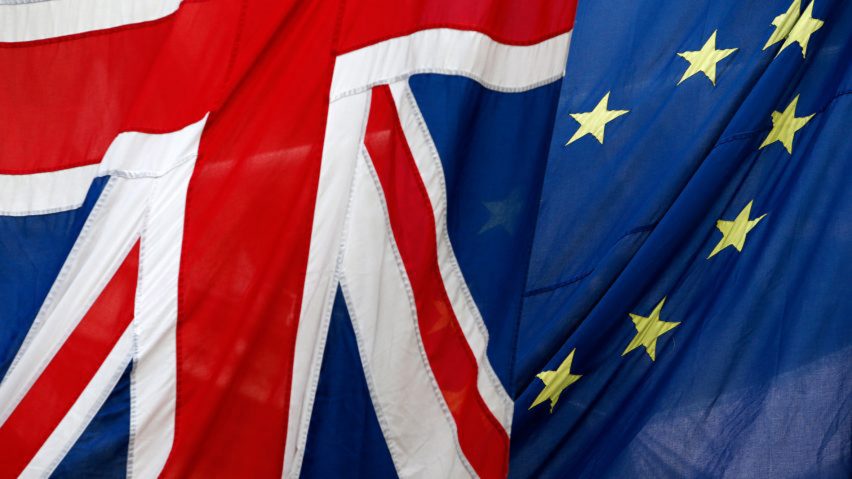
Brexit "a major factor" as EU applications for UK design courses fall by more than 50 per cent
The number of European Union students applying to study art and design in the UK has fallen by more than half compared to last year.
Applications from the EU fell 52 per cent from 22,860 in 2020 to just 10,940 this year, according to data from the UK's Universities and Colleges Admissions Service (UCAS).
Applications from the rest of the world rose seven per cent from 26,680 to 28,530, meaning there was a net fall of just over 10,000 overseas applications.
Jeremy Till, head of London art and design school Central Saint Martins, said the fall in EU applications was "undoubtedly" due to Brexit, which came into force on 1 January this year.
Brexit a "major factor" in drop
"Brexit has undoubtedly been a major factor in the downturn in EU applications," Till told Dezeen.
"The fact that EU students now have to pay fees at the higher international level and are no longer eligible for loans is certainly putting off prospective students," added Till, who is also pro vice-chancellor of the University of Arts London.
Overall applications to courses grew slightly compared to 2020, when the pandemic caused a small drop in overall student numbers compared to 2019. More UK students have applied this year, bringing the total number of applications to 256,420.
Predictions that an uptick in EU student applications in 2018 was a pre-Brexit surge appear to have come true.
EU students must pay international fees
In 2016 The Council for Higher Education in Art & Design warned Brexit would have a "significant impact on staff and student recruitment, competitiveness and prestige of UK creative higher education and creative industries at a time when global competition in these areas is likely to increase steeply."
Since Brexit, students from countries in the EU are no longer eligible for home fees status, meaning they now have to pay higher fees than UK students.
EU students also have to apply for a student visa costing £348 using the UK's new points-based immigration system, as well as paying a £470 surcharge upfront to access the country's free healthcare system.
UK institutions "concerned" at loss of diversity
After graduation, EU students will need to apply for a graduate visa to grant them permission to stay and look for employment for up to two years, posing a further disincentive.
"We are concerned about the effect this will have at UAL, not least because students from the EU have been an important part of our diverse community," said Till.
"Our EU graduates have made important contributions to the creative economy in the UK," he added.
"To mitigate the potential loss of this important constituency, UAL has therefore put in place an extensive bursary scheme to support EU applications."
Fall in numbers could cost universities £66.5 million
The drop in EU student numbers is not entirely unexpected. A report published by the UK government's Department of Education in February 2021 estimated that Brexit could cost universities up to £66.5 million in fee income as EU student numbers dropped.
Travel restrictions introduced in response to the coronavirus pandemic and the UK's high rate of infection could also be putting off potential students.
Further impacts of Brexit on the UK's creative industries include small design firms moving their production abroad to reduce costs and UK architecture qualifications losing automatic recognition in EU countries.